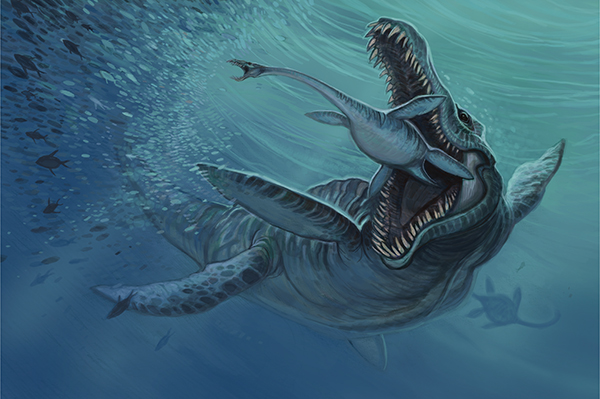

PRONUNCIATION | KROE-noe-SAUR-us
SPECIES | Kronosaurus queenslandicus
NAME | Lizard of Kronos
FAMILY | Pliosauridae
PERIOD | Cretaceous
DIET | Carnivore
SIZE | 40 feet (12m)
YEAR DISCOVERED | 1924
Dinosaurs are one of the most successful and varied classes of animals in earth’s history, adapting and evolving over 200 million years to dominate not only the land and the air but also the sea. Kronosaurus, perhaps the largest carnivorous dinosaur, was a titan among titans. Named after supreme Greek god Kronos, this marine dinosaur of the Pliosauridae family was large and powerful enough to eat a tyrannosaurus and was one of the undisputed apex predators of the Mesozoic Era.
Despite its massive size, kronosaurus would have needed to beach itself in order to lay eggs much like today’s sea turtles. The vulnerable position of this behavior would have made even the biggest specimens subject to attack, and the hatchlings would make easy prey for Cretaceous-period predators.
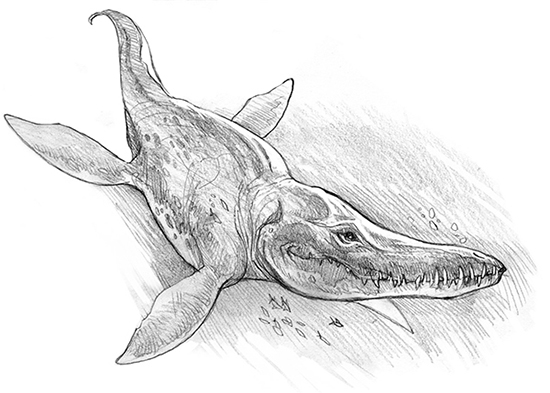
The sleek flippered body of the kronosaurus would be capable of impressive bursts of speed when hunting its prey of large fish, sharks and other marine dinosaurs.

It is likely that an adult kronosaurus living to its maximum size would be rare, much like adult sea turtles and their hatchlings. Paleontological discoveries have shown another marine dinosaur, the ichthyosaurus, to have carried their unborn inside them for live birth at sea. If this is true, then marine dinosaurs would have evolved this trait millions of years before marine mammals like whales.
Thanks to a similar morphology, a kronosaurus might resemble a 30-foot (9m) long marine crocodile.
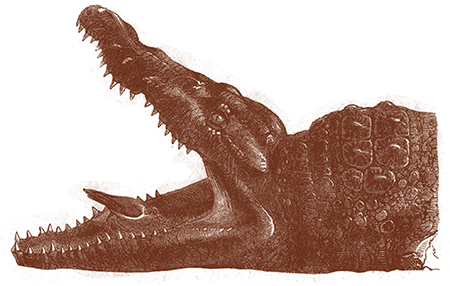

A nineteenth-century reconstruction of kronosaurus.
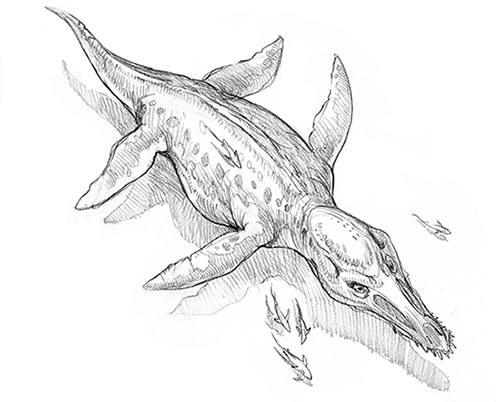
The huge carnivorous marine dinosaur would likely cruise lazily in the warm shallows of the Pangaean Sea allowing the sun to warm its massive body, similar to a crocodile or great white shark. But unlike a shark’s body that needs to keep moving, kronosaurus may even have simply drifted, waiting for a hunting opportunity to present itself.
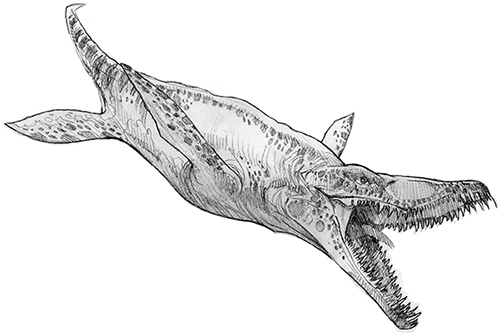
With a massive jaw and teeth similar to its crocodilian cousin, kronosaurus could have likely killed its prey with one great bite. Its oversized head and long, thick teeth could snap and hold onto its prey, possibly even using a crocodile-like death roll to drown and kill it. This is in contrast to sharks, whose serrated, razor-sharp teeth are used to separate its prey into small pieces.